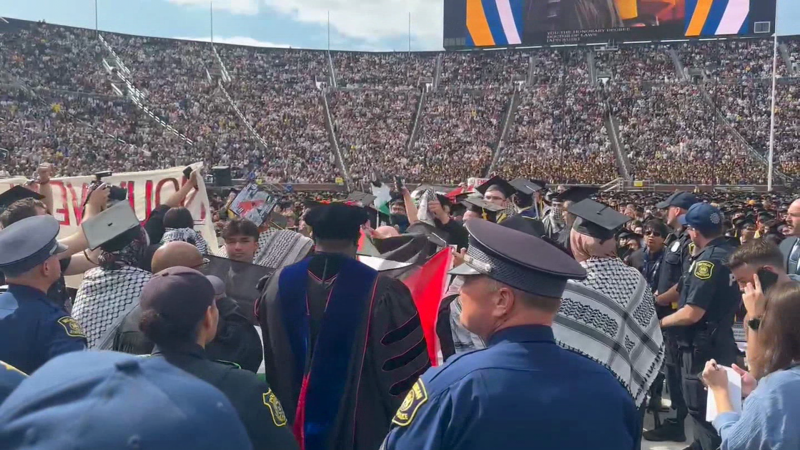“I’m not saying the vaccines are unsafe,” Justice Samuel Alito said, on Friday, during oral arguments at the Supreme Court in the case of National Federation of Independent Businesses v. the Occupational Safety and Health Administration, which involves OSHA’s test-or-vaccine mandate for firms with a hundred or more employees, other than those who work at home or outdoors. He knew that the F.D.A. had approved the vaccines, he said. “I’m not contesting that in any way. I don’t want to be misunderstood. I’m sure I will be misunderstood.” Alito uttered those lines in a sour, singsong tone, as if he were speaking to a recalcitrant child and not, as he was, to Elizabeth Prelogar, the United States Solicitor General, who was defending OSHA in the case, which was brought by the N.F.I.B., an industry group, and twenty-seven states, all with Republican governors or attorneys general. What was hard to miss, if not to misunderstand, was Alito’s hostility to the mandate. The tenor of the questions asked by other Justices—notably Chief Justice John Roberts—similarly suggested that the mandate, which would apply to about eighty million people, has little chance of going into effect in its present form.
The prospects look better for a second mandate, which applies only to workers in health-care facilities that receive Medicare and Medicaid funds, and would affect about ten million people. The oral arguments in that case, Biden v. Missouri, which combines cases initiated by the attorneys general of multiple states, immediately followed the first. But that outcome is hardly a sure thing, and that is remarkable on a couple of levels. First, while the supposed problem with the OSHA mandate is that it is federal overreach, the federal interest in the context of Medicare and Medicaid is fairly clear. As Justice Sonia Sotomayor put it, speaking from the government’s perspective, “If you want my money, your facility has to do this.” Justice Elena Kagan summed up the message to providers, in the context of controlling COVID-19, even more bluntly: “The one thing you can’t do is kill your patients.” Second, even though, like Alito, the lawyers challenging the mandates protested that they had nothing against COVID-19 vaccines, the thrust of their arguments was that getting vaccinated is a terrible imposition that reasonable people might be compelled to quit their jobs rather than endure. These are not fringe-group lawyers but the representatives of multiple states. Elizabeth Murrill, the Louisiana Solicitor General, described what was being asked of workers at Medicare and Medicaid providers as “an invasive, irrevocable, forced medical procedure” being imposed in an unprecedented “bureaucratic power move.” That is a lot to lay on a simple shot that protects against a disease that has taken more than eight hundred thousand American lives.
Alito, after his self-pitying prelude, asked Prelogar to confirm that the vaccines have some risks, unlike, he said, “wearing a hard hat,” which has no “adverse health consequences.” When she noted that what risks there might be were smaller than those associated with COVID-19 “by an order of magnitude,” and that, in any event, the OSHA mandate offers a testing-and-masking alternative, Alito hardly seemed to listen—not even when Kagan jumped in to help Prelogar by noting that “regulators think of risk/risk trade-offs constantly.” When Prelogar mentioned unvaccinated workers who might be older or have comorbidities, Alito interrupted to say, “All of whom have balanced the risk differently, maybe very foolishly, but they want to balance the risks presented to their health in a different way. And OSHA says, no, you can’t do that.”
“Well, one small factual correction, if I could, and then a broader legal point,” Prelogar replied. “I think it’s wrong to say that everyone who’s unvaccinated is just assuming the risk. Some people can’t get vaccinations for medical reasons. Some people have deeply held religious beliefs and are entitled to religious exemptions”—circumstances for which the mandate offers accommodations. “And OSHA is entitled to try to protect those unvaccinated workers, no matter the reason they’re unvaccinated.” That line was the broader legal point, and got at why the going has been so tough for a fairly simple, sensible set of mandates: vaccine skepticism has been joined not only with COVID-19 denialism and Trumpism but with regulatory skepticism, and indeed with hostility to the idea that the federal government has any place regulating businesses at all.
OSHA has, in fact, required vaccines in certain settings in the past; people working in facilities that handle blood and blood products are supposed to be vaccinated against hepatitis B. But the politicized antagonism that has been entangled with the fight against COVID-19 is not confined to commercial matters. A brief filed by Ohio and other states argued that, in attempting to protect workers against COVID-19 infection, OSHA was dealing not with a workplace threat but with a “common risk of life,” and asked what the “limiting principle” might be: “Could it issue ‘workplace’ regulations preempting state laws (and overriding company policies) that forbid or permit carrying a gun at work?” (First they came for Omicron; then they came for your AR-15.) In oral arguments, Benjamin Flowers, Ohio’s solicitor general, who called the mandate a “blunderbuss rule,” argued that because COVID-19 was common outside the workplace—he compared it to the way “there’s some risk of terrorism when we wake up in the morning”—OSHA couldn’t regulate it within the workplace. “Well, why not?” Kagan asked. Workplace risk could be a person’s “greatest, least controllable risk with respect to COVID,” she said. “You can go to the baseball game or not go to the baseball game. You can decide who to go to the baseball game with. But you can’t do any of that in workplaces. . . . You have to be there in the exact environment that the workplace is set up with.”
The arguments in the two cases lasted more than three and a half hours—almost twice as long as scheduled. All the Justices, except Neil Gorsuch, wore masks, though some took them off when they were speaking. Sotomayor participated remotely; as Amy Howe of SCOTUSblog and others noted, she has diabetes, a COVID comorbidity. (Flowers, of the blunderbuss, was also remote, having tested positive; Murrill was remote, too.) Kagan, Sotomayor, and Alito weren’t the only Justices who spoke with passion or even anger. This was notably true of Justice Stephen Breyer. As he pointed out, for now, the question before the Court is whether to allow the mandates to go into effect while they work their way through the lower courts, though in making that call the Justices may choose to speak more broadly on the constitutionality of the mandates, and probably will.
The legal mechanics in the two cases are slightly different. In N.F.I.B. v. OSHA, the challengers are asking the Court to stay the mandate’s implementation, which is set to begin on Monday, when companies are supposed to have plans for how they will comply. (OSHA has said that it will wait longer to actually assess penalties.) In Biden v. Missouri, the challengers have already obtained injunctions blocking the mandate, which had been scheduled to go into effect last week, issued by federal district-court judges in Missouri and Louisiana—the Fifth Circuit also upheld the Louisiana injunction for certain states. The Biden Administration is asking for a stay of those injunctions so that it can proceed. The considerations regarding a stay include the likelihood of success, public interest, and the “balance of harms.” Addressing Keller, the lawyer for the N.F.I.B., Breyer asked if he was saying that “it’s in the public interest in this situation to stop this vaccination rule,” with “nearly three-quarters of a million people, new cases every day? I mean, to me, I would find that unbelievable.” Breyer pushed the question, in similar terms—he used the word “unbelievable” several times—with the other lawyers opposing both mandates. Their basic answer was that, the minute a mandate appeared imminent, workers would quit, resulting in a labor shortage. For the most part, that prediction hasn’t been borne out in places where there are mandates, such as in the meatpacking and airline industries. And, of course, as the current Omicron wave is demonstrating, having people home sick with COVID-19 can cause quite acute labor shortages.
Much of the questioning from the conservative Justices, in particular Brett Kavanaugh and Gorsuch, was tied to what’s called the “major questions” doctrine—which basically says that, if a federal agency plays fast and loose with the authority that Congress has delegated to it, for example by relying on ambiguous statutory language, in ways that have a vast effect, its authority can be challenged. This should not mean that agencies can’t do big things that are clearly within their authority—after all, big things happen, such as pandemics. When Scott Keller said that Congress would have had to “clearly state” that OSHA could “require employees to get certain medical treatment”—he meant a vaccine shot. Justice Sotomayor reminded him that Congress itself had created OSHA and directed it to protect workers, including in innovative ways, and in emergencies. “I don’t know how much clearer you can be, if you’re Congress,” she said.







More News
Renowned painter and pioneer of minimalism Frank Stella dies at 87
‘Zillow Gone Wild’ brings wacky real estate listings to HGTV
Lyndon Barrois talks making art from gum wrappers and “Karate Dog” : Wait Wait… Don’t Tell Me!